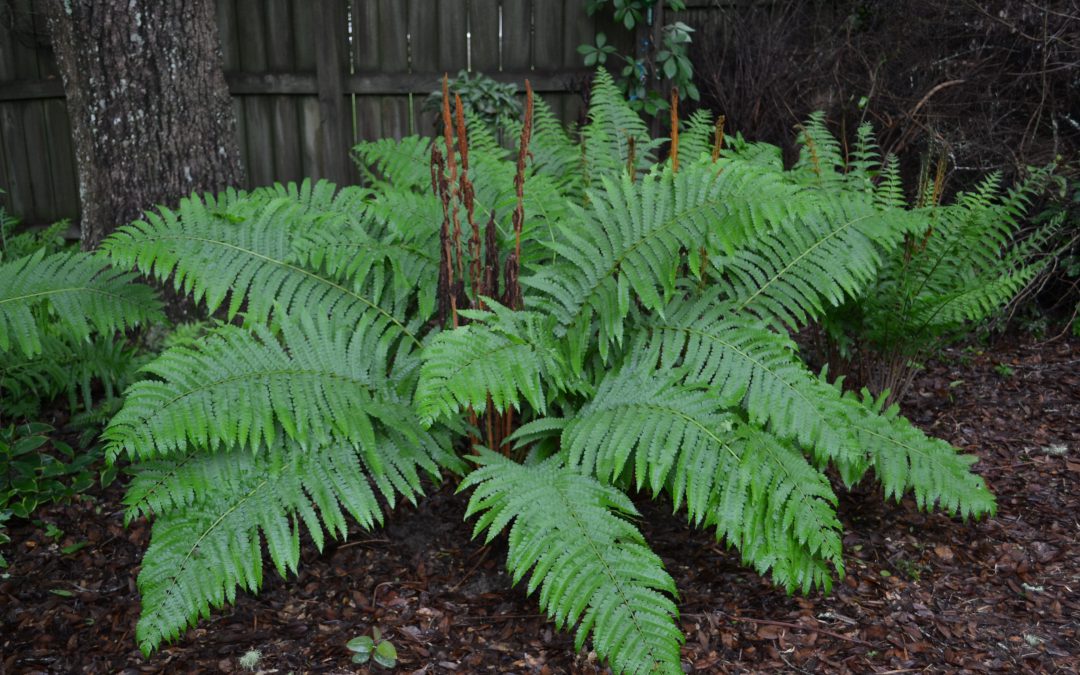
by Beth Bolles | Apr 22, 2021
If you enjoy a walk in some of the Panhandle’s naturally wooded areas you often come across many selections of ferns. One of my favorites to come across is the cinnamon fern, Osmundastrum cinnamomeum.
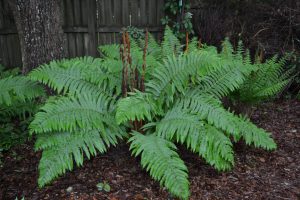
Green fronds are pinnately compound. Fertile fronds with spores emerge in the center. Photo by Beth Bolles, UF IFAS Extension Escambia County.
This clumping fern grows to about 2-3 feet in height. It can be larger when there is ample moisture. In the spring, it forms fertile fronds in the center that are reddish-brown in color. The sterile leaves emerge from the base of the plant to form large leaves about 2 feet in length. Leaves will be green most of the year, depending on available moisture, and can offer some fall color as they die back.
A shaded portion of my backyard has four well established cinnamon ferns. I was able to purchase these from a nursery about 20 years ago. Even without moist soils on my property, the ferns do well with average rainfall.
My favorite season for the cinnamon fern is the spring with the contrasting colors of the sterile and fertile leaves. The plants make an attractive display, mixed with ground orchids, toad lily, and the leaf mulch from the live oak tree.
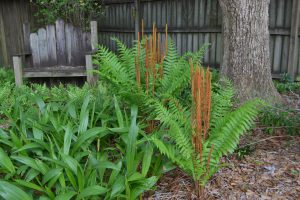
Coarse texture of the ground orchids blend well with the fine textured leaves of the cinnamon fern. Photo by Beth Bolles, UF IFAS Extension Escambia County.
Plan your area carefully if you want to add cinnamon fern since there will not be foliage present in the winter months. Blending these plants with some evergreens creates a low maintenance spot in a shady portion of your landscape.

by Beth Bolles | Aug 7, 2019
We are always on the lookout for an attractive plant for our landscape. At the nursery, some plants have a more difficult time gaining our attention. They may not be as showy, possessing neither colorful flowers nor bold foliage. In these cases, we could be missing out on low maintenance plant that offers its own form of beauty in the right landscape spot.
One plant that I love is the Japanese plum yew (Cephalotaxus harringtonia), especially the spreading form ‘Prostrata’. In the nursery container, this plant is nothing special but once established in the landscape it performs well. The conifer type leaves are an attractive dark green and the ‘Prostrata’ selection is low growing to about 2 to 3 feet. An advantage too is that growth is slow so it won’t take over or require routine pruning.
Japanese plum yews grow best in partial shade and once established will be fine with rainfall. For a shadier side of the home, the spreading plum yew has a place as an evergreen foundation plant too.
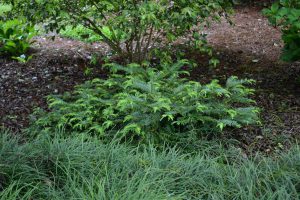
Japanese plum yew in a shaded garden. Photo by Beth Bolles, UF IFAS Extension Escambia County
If the ‘Prostrata’ selection is too low growing for you, consider the ‘Fastigiata’ cultivar that will grow upright to about 8 feet with a 5 foot spread.
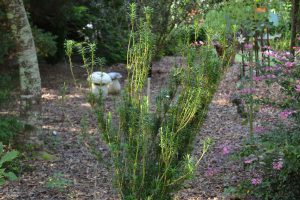
A year old planting of upright Japanese plum yew in filtered light. Photo by Beth Bolles, UF IFAS Extension Escambia County
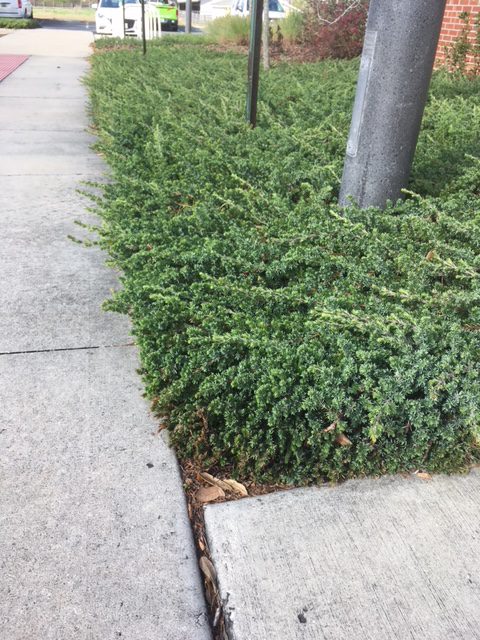
by Julie McConnell | Mar 13, 2018
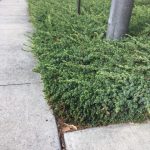
Shore juniper forms a thick groundcover and tolerates hot, dry sites. Photo: J_McConnell, UF/IFAS
We all know that when you have bare ground in Florida, eventually something unwanted moves in or the soil moves out. To avoid either of these negative outcomes, a good practice is to grow robust vegetative groundcovers, especially if the soil slopes and is at high risk of eroding. Turfgrass is one option, but what if you don’t enjoy caring for a lawn or the site is difficult to maintain or even unsafe to mow? An often overlooked option in our area is Shore Juniper Juniperus conferta.
Although some people find this plant less than exciting, its easy to explain why it can be a good option in certain situations.
- Easy to find at nurseries
- Inexpensive
- Low water requirements once established (you’ll need to turn the irrigation off on these!)
- Salt tolerant
- Evergreen
- Cold tolerant
- Low, spreading growth habit (won’t block view)
- Do not require pruning (junipers cannot tolerate heavy pruning!)
A common cultivar of shore juniper is Blue Pacific Juniper which grows to be about one foot tall but spreads two to three feet wide. The new foliage has a blue cast that gives it the common name. It creeps along the ground and will provide good ground cover to sloping sites. This plant should be planted on 3 foot centers so they have room to expand without crowding. Plant in well-drained soil and apply two inches of mulch on bare soil between plants to reduce weeds while the plants are filling in. Only water until established, then stop automated irrigation and only water as needed. Read more at Establishing Shrubs Florida Landscapes.








